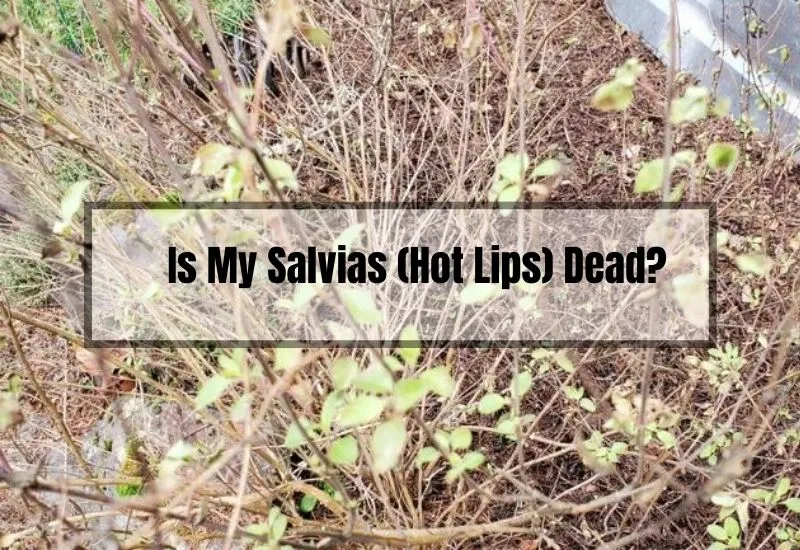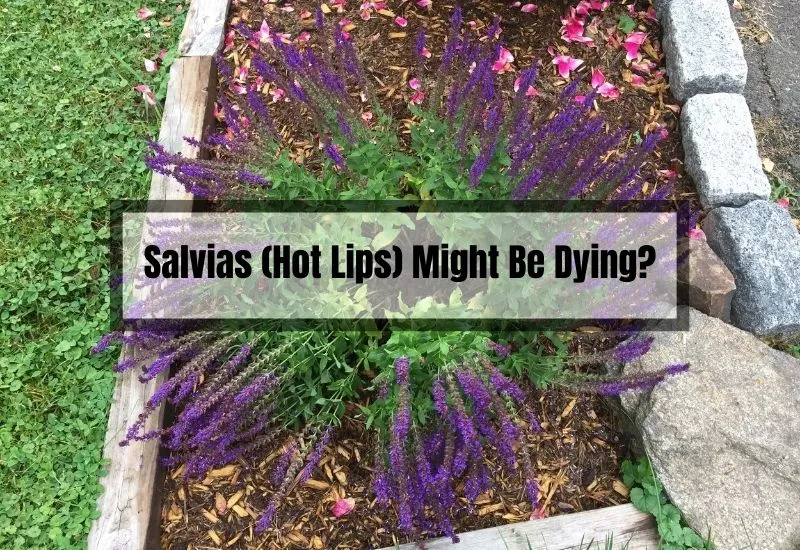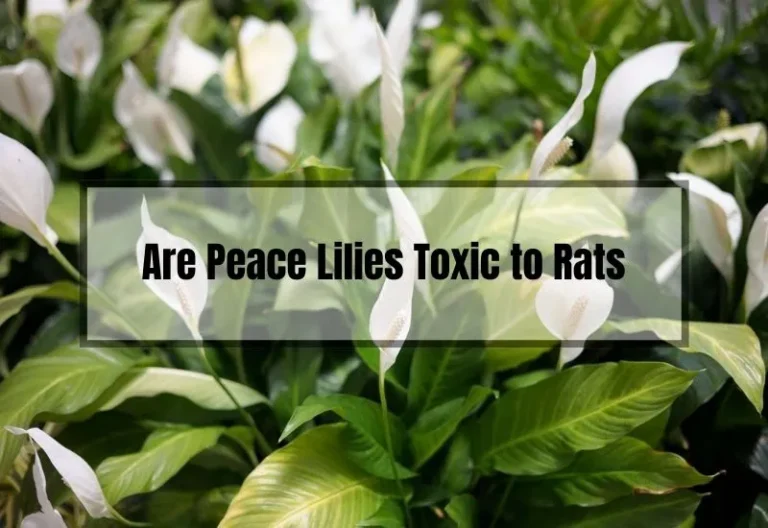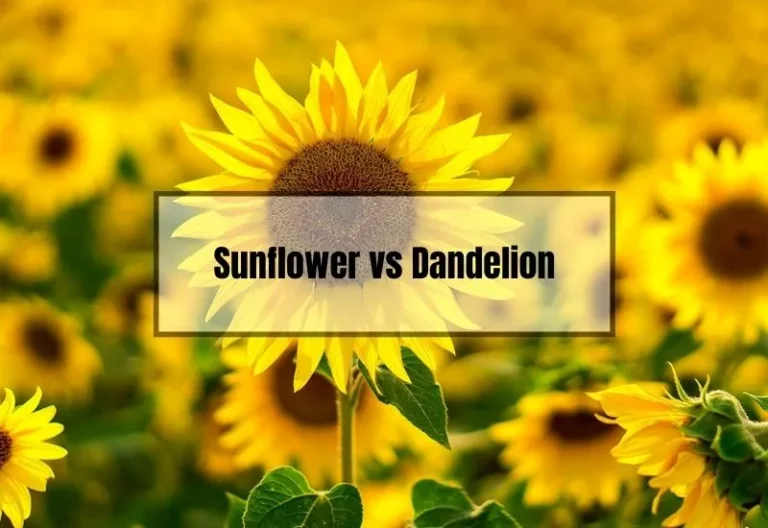Is My Hot Lips Plant Dead? Tips for Reviving Your Beloved Plant
Are you worried that your Hot Lips plant might be dying? Don’t panic just yet. Hot Lips plants, also known as Salvia microphylla ‘Hot Lips’, are popular ornamental plants that add a touch of color and fragrance to any garden or landscape.
However, like any plant, they can suffer from various issues that can cause them to wilt, turn brown, and even die. In this article, we will explore the signs of a healthy Hot Lips plant, the signs of a dying Hot Lips plant, and how to revive a dying Hot Lips plant.
A healthy Hot Lips plant should have vibrant red and white flowers, and aromatic foliage. It should also have strong stems and leaves that are not wilted or yellowing. If your Hot Lips plant is not showing these signs, then it might be suffering from various issues such as overwatering, underwatering, pests, diseases, or poor soil quality.
It’s important to identify the issue so that you can take the appropriate steps to revive your plant. In the next section, we will explore the signs of a dying Hot Lips plant so that you can take action before it’s too late.
Key Takeaways
- A healthy Hot Lips plant should have vibrant red and white flowers and strong stems and leaves.
- Signs of a dying Hot Lips plant include wilted or yellowing leaves, brown or black stems, and lack of new growth.
- To revive a dying Hot Lips plant, you need to identify the issue, such as overwatering or pests, and take appropriate steps to treat it.

Is My Hot Lips Plant Dead
You’ve been taking care of your hot lips plant for a while now, but something seems off. Maybe it’s not looking as lively as it used to, or it’s losing leaves faster than it’s growing them back.
Before you panic, there are a few signs you can look for to see if your hot lips plant is dead or just needs a little extra care.
Checking for Signs of Life

- Watering: Hot lips plants prefer evenly moist soil conditions. Make sure you’re not overwatering or underwatering your plant. Check the soil regularly to make sure it’s not too dry or too wet.
- Sunlight: Hot lips plants need plenty of sunlight to thrive. Make sure your plant is getting at least six hours of direct sunlight per day.
- Pruning: Regular pruning can help your hot lips plant grow stronger and healthier. Remove any dead or yellowing leaves, and cut back any stems that are growing too long or leggy.
- Pests and Diseases: Hot lips plants are susceptible to a variety of pests and diseases, including spider mites, aphids, and powdery mildew. Keep an eye out for any signs of infestation or disease, and treat your plant accordingly.
The first step to determining if your hot lips plant is dead is to check for any signs of life. Look closely at the stems and leaves to see if there are any new growths or buds. If you see any, then your hot lips plant is still alive and just needs some extra care to thrive.
Scratch the Stems
If you’re not sure if your hot lips plant is dead or alive, try scratching the stems with your fingernail. If you see green tissue underneath, then your plant is still alive. If the tissue is brown or black, then your plant is dead.
Addressing Common Issues
If your hot lips plant is still alive, but not thriving, there may be some common issues that need to be addressed. Here are some things to consider:
By following these tips, you can help your hot lips plant thrive and stay healthy. Remember to check for signs of life, address any common issues, and give your plant the care it needs to grow strong and beautiful.
Signs of a Healthy Hot Lips Plant
Hot Lips plants are known for their vibrant red and white flowers and aromatic foliage. They add a touch of color and fragrance to any garden or landscape. Here are some signs to look for to determine if your Hot Lips plant is healthy:
Appearance
A healthy Hot Lips plant should have:
- Bright green leaves that are not wilted or yellowing
- Sturdy stems that are not drooping or bending
- Vibrant red and white flowers that are not wilting or falling off
Soil
The soil is an important factor in the health of your Hot Lips plant. Here’s what to look for:
- The soil should be moist but not waterlogged
- The soil should be well-draining
- The soil should be rich in nutrients
Sunlight
Hot Lips plants require plenty of sunlight to thrive. Here’s what to look for:
- The plant should be receiving at least 6 hours of direct sunlight each day
- The leaves should not be scorched or browned from too much sun exposure
Pests and Diseases
Pests and diseases can quickly damage a Hot Lips plant. Here’s what to look for:
- No signs of pests such as aphids, spider mites, or whiteflies
- No signs of diseases such as powdery mildew, leaf spot, or root rot
By keeping an eye out for these signs, you can ensure that your Hot Lips plant stays healthy and vibrant all season long.
Signs of a Dying Hot Lips Plant
If you’re a plant parent, you know how heartbreaking it can be to see your beloved plant dying.
Hot Lips plants are beautiful and vibrant, and it’s important to know the signs of a dying plant so you can take action and save it. Here are some common signs that your Hot Lips plant is in trouble:
Color Changes
One of the first signs that your Hot Lips plant is struggling is a change in color. If the leaves start turning yellow or brown, it could be a sign of overwatering or underwatering. Check the soil to see if it’s too dry or too wet.
Hot Lips plants prefer evenly moist soil conditions, so make sure to water it regularly, but not too much. If the leaves are turning pale or losing their vibrant color, it could be a sign of nutrient deficiency. Consider fertilizing your plant with a balanced fertilizer to give it the nutrients it needs.
Leaf Drop
Another common sign of a dying Hot Lips plant is leaf drop. If you notice that the leaves are falling off, it could be a sign of stress. Hot Lips plants are sensitive to changes in temperature and light, so make sure it’s in a spot with consistent conditions.
If the leaves are dropping from the bottom of the plant, it could be a sign of root rot. Check the roots to see if they’re brown and mushy. If so, it’s time to repot your plant in fresh soil.
Stunted Growth
If your Hot Lips plant isn’t growing as it should, it could be a sign of a problem. If the plant is small and not growing, it could be a sign of insufficient light.
Hot Lips plants need bright, indirect light to thrive. If the plant is growing but not producing flowers, it could be a sign of overfertilization. Hot Lips plants don’t need a lot of fertilizer, so make sure you’re not overdoing it.
How to Revive a Dying Hot Lips Plant
Hot Lips plants are a beautiful addition to any garden or home, but sometimes they can start to wilt and look like they’re on their way out. If you’re wondering how to revive a dying Hot Lips plant, don’t worry, there are a few things you can do to help bring it back to life.
Proper Watering
One of the most common reasons that Hot Lips plants start to die is because they’re not getting enough water or they’re getting too much. Make sure you’re watering your plant regularly, but not too much.
You want the soil to be moist, but not waterlogged. If the soil is too dry, the leaves will start to wilt and turn brown. If the soil is too wet, the roots can start to rot.
To make sure you’re watering your Hot Lips plant properly, check the soil regularly. Stick your finger about an inch into the soil. If it feels dry, it’s time to water. If it feels wet, wait a few days before watering again.
Adequate Sunlight
Hot Lips plants need plenty of sunlight to thrive. If your plant is not getting enough sunlight, it can start to wilt and die. Make sure your plant is getting at least six hours of sunlight a day. If your plant is not getting enough sunlight, move it to a sunnier location or consider using a grow light.
Fertilizing
Another reason that Hot Lips plants can start to die is because they’re not getting enough nutrients. Make sure you’re fertilizing your plant regularly. Use a balanced fertilizer once a month during the growing season. If your plant is still struggling, consider using a fertilizer that’s specifically designed for flowering plants.
Preventing Future Problems
To keep your Hot Lips plant healthy and vibrant, it’s important to take preventative measures against pests and diseases. Here are some tips to help you keep your plant thriving:
Pest Control
Pests can quickly take over your Hot Lips plant, causing damage and even death. Here are some ways to prevent pests from infesting your plant:
- Keep your plant clean: Remove any dead leaves or debris from around the plant. This will help prevent pests from hiding and breeding.
- Use natural pest control methods: Consider using natural pest control methods, such as neem oil or insecticidal soap. These methods are safer for your plant and the environment.
- Inspect your plant regularly: Check your plant regularly for signs of pest infestation, such as holes in the leaves or sticky residue on the plant. Early detection can help prevent the spread of pests.
Disease Prevention
Diseases can also damage your Hot Lips plant, causing it to wilt and die. Here are some ways to prevent diseases from affecting your plant:
- Water your plant correctly: Overwatering or underwatering your plant can cause root rot or other diseases. Make sure to water your plant only when the soil is dry to the touch.
- Provide proper air circulation: Good air circulation can help prevent diseases from taking hold. Make sure to space your plants out and avoid overcrowding.
- Use disease-resistant varieties: Consider planting disease-resistant varieties of Hot Lips plant to help prevent common diseases.
By taking these preventative measures, you can help keep your Hot Lips plant healthy and thriving for years to come.
What To Do If You Suspect Your Salvias (Hot Lips) Might Be Dying?

If you’ve noticed some troubling signs and suspect that your hot lips plant might be on its last legs, don’t fret! There are steps you can take to try and revive your beloved salvias.
Understand the Characteristics of Hot Lips Salvias
First things first, make sure you’re familiar with the specific needs and characteristics of your hot lips plant.
This will help you identify what might be causing the problem and how to address it effectively.
Check the Soil
As we’ve mentioned before, the soil plays a crucial role in the health of your hot lips plant. Make sure the soil is well-draining and has the right nutrients to support your plant’s growth.
If necessary, amend the soil with organic matter or adjust your watering habits.
Check for Pests
Inspect your plant for any signs of pests or diseases. If you find any unwelcome visitors, treat them promptly using organic pest control methods to prevent further damage to your salvias.
Prune the Plant
Trim away any dead or damaged parts of the plant to encourage new growth. This will also help prevent the spread of disease and give your salvias a better chance at recovery.
Wait and Observe
Sometimes, all your hot lips plant needs is a little time to bounce back. After taking the necessary steps to help your plant recover, be patient and observe any changes.
It might take a while, but with proper care, your salvias could make a triumphant return.
How To Grow Back Salvias (Hot Lips) If They Are Dead?
If your hot lips plant has unfortunately met its end, don’t lose heart. You can still try to grow it back and enjoy its beauty once more.
Identify the Cause of Death
Before you attempt to grow back your salvias, it’s crucial to determine what went wrong. This way, you can avoid making the same mistakes and give your new plant the best chance at survival.
Remove Dead Material
Start by clearing away any dead plant material and debris from the area. This will help prevent the spread of disease and give your new plant a fresh, clean start.
Water and Fertilize
Once you’ve planted a new hot lips plant, make sure to water it regularly and provide it with proper nutrients.
Use a balanced fertilizer to support strong growth and overall plant health.
Provide Adequate Light
Hot lips salvias need plenty of sunlight to thrive. Make sure your plant is getting at least six hours of direct sunlight each day. If necessary, consider relocating your plant to a sunnier spot in your garden.
Be Patient
Growing back your salvias might take some time, but with patience and consistent care, you’ll soon see your hot lips plant come back to life and grace your garden with its vibrant colors.
Frequently Asked Questions (FAQs)
Here are some commonly asked questions about salvias (hot lips) to help you better understand and care for these lovely plants.
How often should I water my salvias (hot lips)?
Water your hot lips plant regularly, allowing the soil to dry out slightly between watering sessions. During hot and dry weather, you may need to water more frequently to ensure the plant stays hydrated.
What type of soil do salvias (hot lips) prefer?
Salvias thrive in well-draining, nutrient-rich soil. Before planting, consider amending the soil with compost or other organic matter to provide your plant with the best growing conditions.
Can salvias (hot lips) survive in partial shade?
While hot lips plants prefer full sun, they can tolerate some shade. However, too much shade may result in reduced flowering and weaker growth. Aim to provide your plant with at least six hours of direct sunlight each day.
Are there any natural pest control methods for salvias (hot lips)?
Yes, there are several organic pest control methods you can use to protect your hot lips plant. Insecticidal soap, neem oil, and introducing beneficial insects like ladybugs are some popular options to keep pests at bay.
How can I overwinter my salvias (hot lips)?
In colder climates, you can overwinter your salvias by cutting them back to about 6 inches above the ground and adding a layer of mulch to protect the roots. Alternatively, you can grow your hot lips plant in a container and bring it indoors during the winter months.
Conclusion
Proper care is essential for your salvias (hot lips) to thrive and bring that much-needed pop of color to your garden. If you suspect that your plant is dead, don’t lose hope – there are steps you can take to help it recover or even grow it back.
By understanding the potential causes of plant death and providing the right care, you can enjoy the beauty of your hot lips salvias for many seasons to come. Happy gardening!




